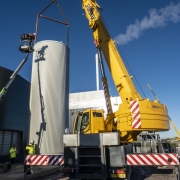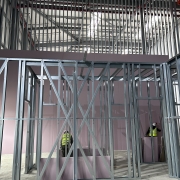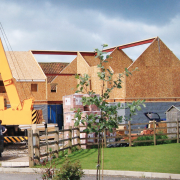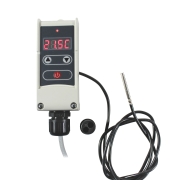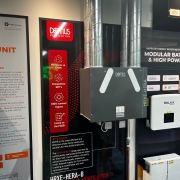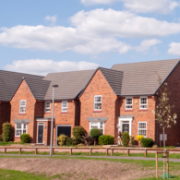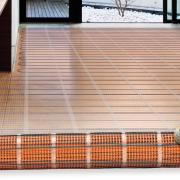GEZE UK is delighted to announce several new products have been added to their range of pedestrian traffic control systems, PACE, to give even more choice when selecting solutions that offer safe and efficient control of pedestrians in and out of buildings. All products are supplied and installed in accordance to EN 17352:2022 – the standard for powered turnstiles and speed lanes that was harmonised in August 2023.
New to the range are the SL 550 and SL 900 speed gates with stylish folding high gates and a reliable, robust design that guarantees effective protection of the building making them ideal for banks and offices.
The popular SW 100 range has been extended to include two extra wide options. The SW 100 Wide and SW 100 High Glass Wide both offer a passage of 1200mm perfect for ease of carrying luggage and wheelchair access.
OX S, OX M and OX XL are a new series of aesthetically pleasing turnstiles with ergonomic design and efficient control – ideal for high traffic flow locations.
In the full height category, the HW G / NG with glass leaves and side panels perfectly combine modern aesthetics and functionality for even greater security with high visibility.
More cost effective than manual checks and providing round the clock control in buildings that are operational 24 hours a day, pedestrian access control is ideal for controlling access to any part of a building that requires it, as well as the main entrance.
The PACE range can be tailored to the needs of any specification, compatible with many control devices – push button, card reader – available as single or bi-directional use, and different lane widths. To complement the design or match automatic doors different finishes can be specified – brushed stainless steel, polished stainless steel, or RAL powder coating.
Where security is a high priority, options include high panels and anti-tailgating functions. IRIS readers, and finger-print or face recognition devices can also be integrated. But whatever the demand for security, the visual aspect of the building is never compromised.
Controlling large numbers of people entering or leaving a building ensures their safety but, in an emergency, or power failure, all motorised systems can be used freely in both directions.
GEZE UK offers a complete package of pedestrian control that includes access control and automatic doors.
Andy Howland, Sales and Marketing Director for GEZE UK, said: “These new products offer even more choice, several of which are like nothing else in the market. Together with GEZE automatic doors and the PACE range of access control we offer specifiers a complete package to control the flow of people in and around a building ensuring safety and security at all times for those using the building”.
To find out more on PACE or GEZE UK’s comprehensive range of automatic and manual door closers visit PACE Pedestrian Access Control Equipment | GEZE or for a PACE brochure email info.uk@geze.com



